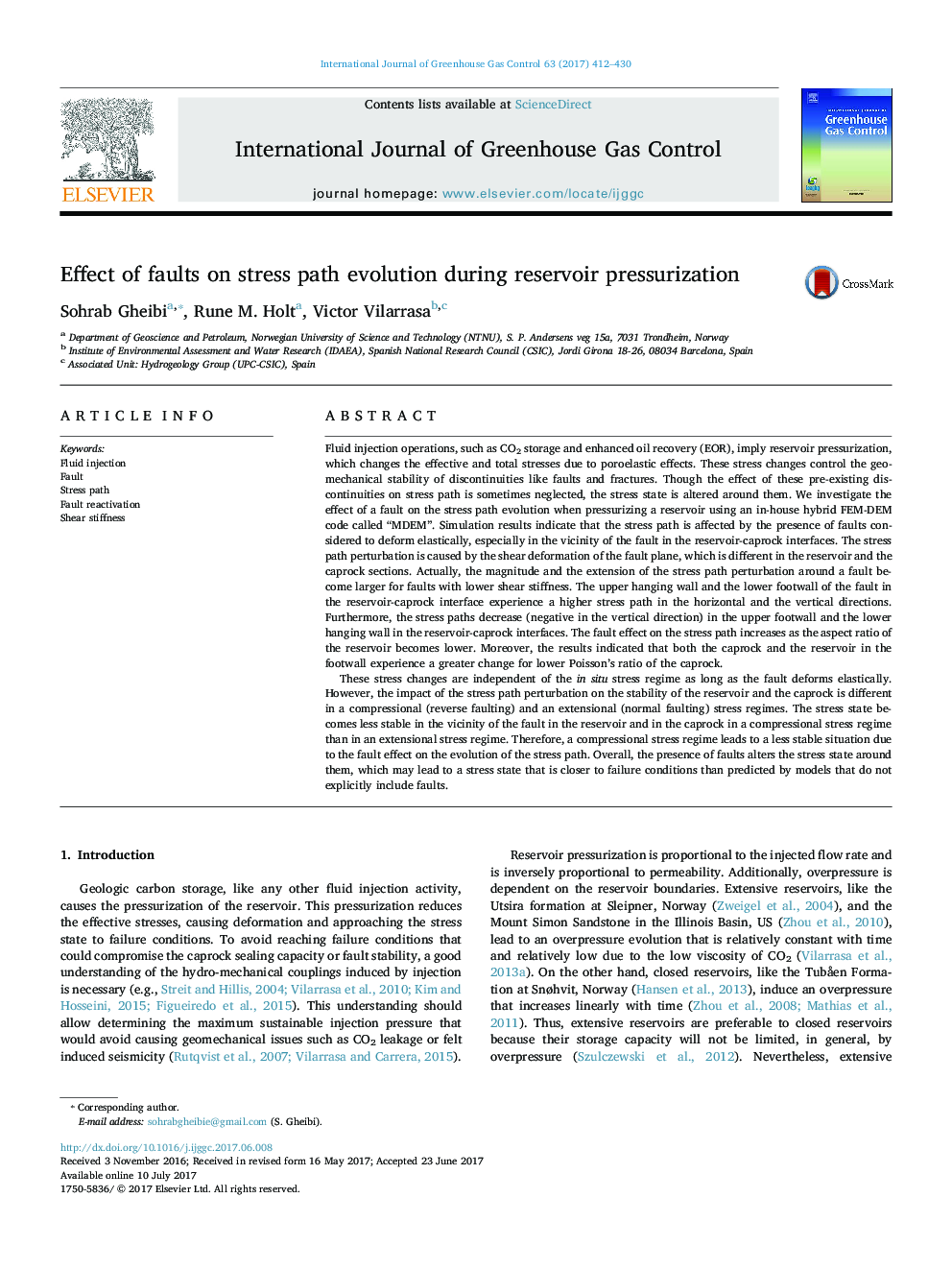| کد مقاله | کد نشریه | سال انتشار | مقاله انگلیسی | نسخه تمام متن |
|---|---|---|---|---|
| 5478852 | 1521956 | 2017 | 19 صفحه PDF | دانلود رایگان |
- We study the effect of faults on the evolution of static stress path due to injection.
- The upper hanging wall and the lower footwall of a fault in the reservoir-caprock interface experience a higher stress path.
- Neglecting the fault effect on the stress path can lead to underestimation of the geomechanical risks associated with CO2 storage reservoir.
- Softer fault planes have stronger impact on the quantity of the stress path and size of the affected zone.
- Vertical stress path is negligible for reservoirs with aspect ratio lower than 0.1 in the no fault models.
Fluid injection operations, such as CO2 storage and enhanced oil recovery (EOR), imply reservoir pressurization, which changes the effective and total stresses due to poroelastic effects. These stress changes control the geomechanical stability of discontinuities like faults and fractures. Though the effect of these pre-existing discontinuities on stress path is sometimes neglected, the stress state is altered around them. We investigate the effect of a fault on the stress path evolution when pressurizing a reservoir using an in-house hybrid FEM-DEM code called “MDEM”. Simulation results indicate that the stress path is affected by the presence of faults considered to deform elastically, especially in the vicinity of the fault in the reservoir-caprock interfaces. The stress path perturbation is caused by the shear deformation of the fault plane, which is different in the reservoir and the caprock sections. Actually, the magnitude and the extension of the stress path perturbation around a fault become larger for faults with lower shear stiffness. The upper hanging wall and the lower footwall of the fault in the reservoir-caprock interface experience a higher stress path in the horizontal and the vertical directions. Furthermore, the stress paths decrease (negative in the vertical direction) in the upper footwall and the lower hanging wall in the reservoir-caprock interfaces. The fault effect on the stress path increases as the aspect ratio of the reservoir becomes lower. Moreover, the results indicated that both the caprock and the reservoir in the footwall experience a greater change for lower Poisson's ratio of the caprock.These stress changes are independent of the in situ stress regime as long as the fault deforms elastically. However, the impact of the stress path perturbation on the stability of the reservoir and the caprock is different in a compressional (reverse faulting) and an extensional (normal faulting) stress regimes. The stress state becomes less stable in the vicinity of the fault in the reservoir and in the caprock in a compressional stress regime than in an extensional stress regime. Therefore, a compressional stress regime leads to a less stable situation due to the fault effect on the evolution of the stress path. Overall, the presence of faults alters the stress state around them, which may lead to a stress state that is closer to failure conditions than predicted by models that do not explicitly include faults.
Journal: International Journal of Greenhouse Gas Control - Volume 63, August 2017, Pages 412-430
